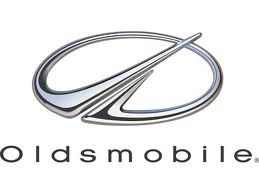Ninety-Eight FWD V6-181 3.0L (1985)

Brake Shoe: Service and Repair
General Inspection
Brake Drums
Any time the brake drums are removed for brake service, the braking surface diameter should be checked with a suitable brake drum micrometer at
several points to determine if they are within the safe oversize limit stamped on the brake drum outer surface. If the braking surface diameter exceeds
specifications, the drum must be replaced. If the braking surface diameter is within specifications, drums should be cleaned and inspected for cracks,
scores, deep grooves, taper, out of round and heat spotting. If drums are cracked or heat spotted, they must be replaced. Minor scores should be
removed with sandpaper. Grooves and large scores can only be removed by machining with special equipment, as long as the braking surface is within
specifications stamped on brake drum outer surface. Any brake drum sufficiently out of round to cause vehicle vibration or noise while braking or
showing taper should also be machined, removing only enough stock to true up the brake drum.
After a brake drum is machined, wipe the braking surface diameter with a denatured alcohol soaked cloth. If one brake drum is machined, the other
should also be machined to the same diameter to maintain equal braking forces.
BRAKE LININGS & SPRINGS
Inspect brake linings for excessive wear, damage, oil, grease or brake fluid contamination. If any of the above conditions exists, brake linings should
be replaced. Do not attempt to replace only one set of brake shoes; they should be replaced as an axle set only to maintain equal braking forces.
Examine brake shoe webbing, hold-down and return springs for signs of overheating indicated by a slight blue color. If any component exhibits
overheating signs, replace hold-down and return springs with new ones. Overheated springs lose their pull and could cause brake linings to wear out
prematurely. Inspect all springs for sags, bends and external damage and replace as necessary.
Inspect hold-down retainers and pins for bends, rust and corrosion. If any of the above is found, replace as required.
Backing Plate
Inspect backing plate shoe contact surface for grooves that may restrict shoe movement and cannot be removed by lightly sanding with emery cloth or
other suitable abrasive. If backing plate exhibits above condition, it should be replaced. Also inspect for signs of cracks, warpage and excessive rust,
indicating need for replacement.
Adjuster Mechanism
Inspect all components for rust, corrosion, bends and fatigue. Replace as necessary. On adjuster mechanism equipped with adjuster cable, inspect
cable for kinks, fraying or elongation of eyelet and replace as necessary.
Parking Brake Cable
Inspect parking brake cable end for kinks, fraying and elongation and replace as necessary. Use a small hose clamp to compress clamp where it enters
backing plate to remove.
